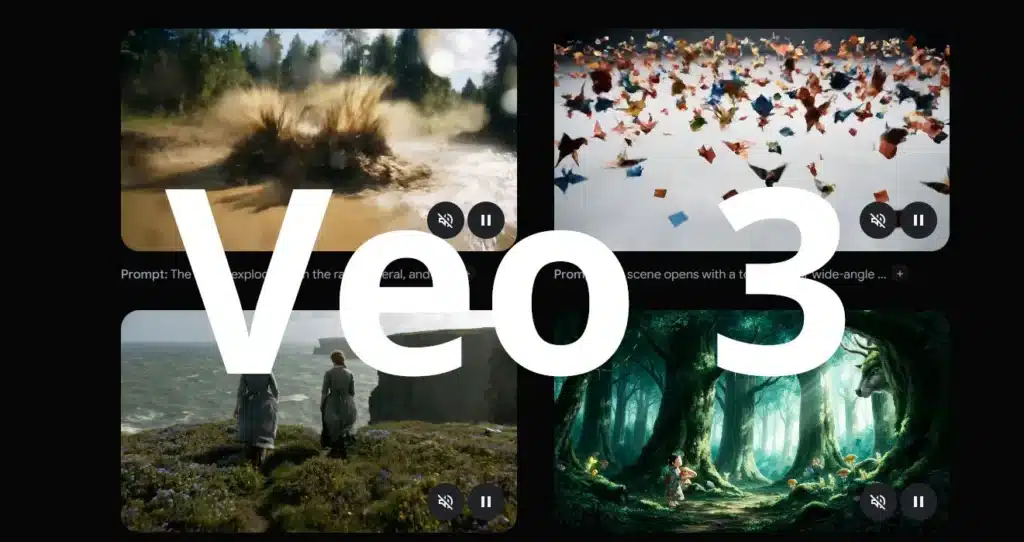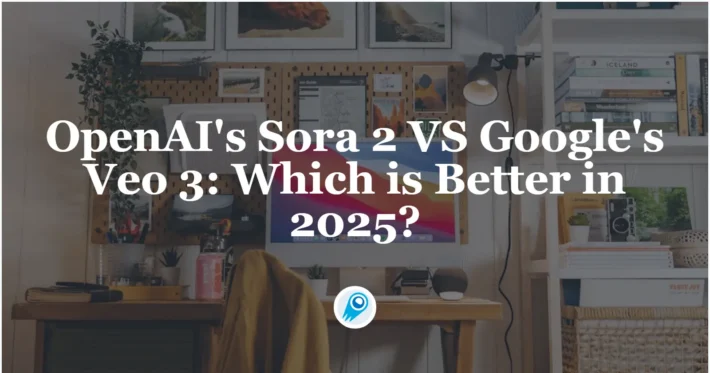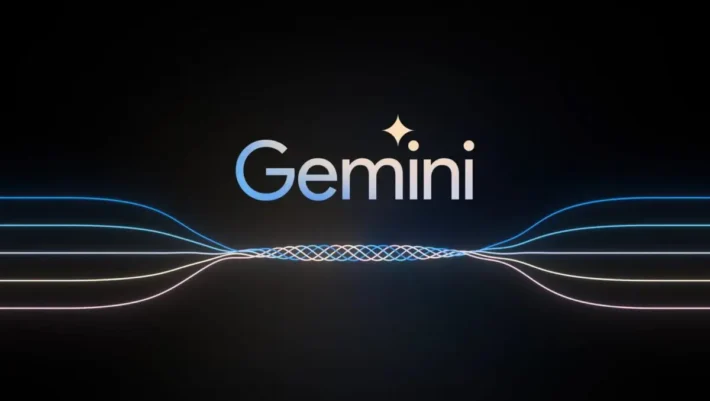How Much does Veo 3 Cost?

Google’s Veo 3 — the company’s latest video-generation model that produces synchronized visuals and native audio from text or images — has been rolled out across several access channels (Gemini / Google AI consumer plans, the Gemini API, and Vertex AI for enterprise). That means “how much it costs” depends on how you plan to use it: a consumer subscription, pay-as-you-go API calls, or a third-party integration.
What is Veo 3 and why does pricing matter now?
Veo 3 is Google’s most advanced text-to-video model: it generates 1080p video with native audio (including dialogue and sound effects), lip sync, and higher fidelity motion and physics compared with earlier systems. Google has integrated Veo 3 both into developer APIs (Gemini/Gemini API / Vertex AI) and into consumer-facing products such as Flow and the Google AI subscription offering (AI Ultra). That means there are multiple ways to access the model — and each path leads to different pricing, limits and practical costs.
Veo 3’s release accelerated in mid-2025: Google announced Veo 3 availability on Vertex AI and rolled out Flow for creators. As a newer class of generative model, Veo 3’s pricing reflects two industry truths: (1) video generation is computationally expensive, and (2) vendors are experimenting with bundle (subscription) and utility (per-second / credit) pricing to balance predictability and flexibility. Understanding the published rates and how vendor credits convert to real output is therefore essential for anyone budgeting for AI-generated video.
What are the subscription options that include Veo 3 and what do they cost?
Google sells access to its advanced AI tools through tiered consumer/business subscriptions. The two headline tiers are Google AI Pro and Google AI Ultra:
Google AI Ultra — premium, higher limits
Google AI Ultra is the premium tier that originally bundled full access to Veo 3 and Google’s Flow filmmaking tools. It was launched at a \$249.99 per month price point in the U.S., with introductory discounts sometimes offered to new subscribers. This tier is designed for professionals and teams who need large monthly quotas, high storage, and the “highest” access level to Google’s newest models.
Google AI Pro — budget / creator tier (limited Veo 3 Fast access)
Google AI Pro is the lower-cost tier (commonly advertised around \$19.99 per month), and Google has expanded it to include Veo 3 Fast in many regions. The Pro tier typically gives users a limited number of Veo 3 Fast generations per day (for example, three 8-second Veo 3 Fast videos per day in the Gemini app), along with a monthly pool of shared credits for other features. For creators who want to experiment with short clips without paying Ultra prices, Pro is the practical entry point.
What this means in practice: If you need sustained, high-volume Veo 3 usage (many long clips, enterprise pipelines, integration into apps), Ultra is the intended option. If you only need a handful of short, social-ready clips per day, Pro often suffices — especially now that Google has rolled Veo 3 Fast into the Pro tier.
How is Veo 3 priced if I call it directly via the API or Vertex AI?
For developers and companies who call Veo 3 directly through Google’s developer interfaces (Gemini API) or Vertex AI, Google publishes per-second pricing for video + audio outputs. The official developer announcement sets Veo 3 at \$0.75 per second of generated video/audio output; Veo 3 Fast is positioned as a faster, lower-cost alternative coming shortly. That means an 8-second Veo 3 clip would cost \$6.00 at the listed per-second rate (8 × \$0.75).
API pricing example
- Single 8-second clip (Veo 3): 8 s × \$0.75/s = \$6.00
- Ten 8-second clips: 80 s × \$0.75/s = \$60.00
- A 30-second clip (single render): 30 s × \$0.75/s = \$22.50
These per-second costs apply when you use the Gemini API or Vertex AI directly (or via apps that bill by API usage). Keep in mind that real billed amounts can change if a service layers credits, rounding, or minimums on top of the raw API call.
How can you minimize Veo 3 costs in practice?
- Prototype with free credits first. Use Google Cloud \$300 promo credits and any trial months to test the exact seconds/credits your workflows consume.
- Use Veo 3 Fast for drafts. Reserve full Veo 3 renders for final, high-value shots. Use Veo 3 Fast or cheaper models for iterative work.
- Batch and reuse assets. Generate reusable background plates, audio stems, or character rigs that you can stitch rather than re-generate every frame.
- Measure iteration cost. Track how many attempts you run per final clip and build that multiplier into your per-project budget. Some testers reported a 2–5× multiplier due to attempts.
- Consider third-party bundles for scale. If the UX of Google’s tools is slowing you down, a tool like Canva may yield similar outputs faster and cheaper for social content.
What other cost factors should you budget for?
Generating a video is rarely a single line-item. Consider these extras:
Rendition retries and iterations
AI video is iterative. A typical creative workflow will require multiple drafts; if you pay per second, multiply raw generation cost by the number of drafts. Subscriptions that provide generous credit allowances or lower-cost “Fast” modes designed for rapid iteration may be cheaper for iteration-heavy workflows.
Fast vs standard modes
Google offers both Veo 3 and a Veo 3 Fast variant optimized for speed. Historically, “fast” modes may be priced differently (sometimes cheaper per second but trading off top fidelity), so cost per finished minute can vary by mode.
Storage, delivery, and integration costs
Cloud storage (saving generated videos), CDN delivery for distribution, and any additional processing (compositing, transcoding) add to the total project cost. If you host generated assets in Google Cloud, expect standard storage and egress charges. Enterprise deals may bundle some of this.
Quality, safety checks, and watermarking
Google has implemented watermarking and content-safety mitigations; removing visible watermarks or performing advanced safety checks might be constrained or permitted only under specific licensing, which can affect cost if you need “clean” assets for commercial use. Also note potential legal and moderation costs tied to misuse risks — see below.
Who should pay for Veo 3 — is it worth it?
Hobbyists and casual creators
If you’re experimenting or making occasional social clips, look for third-party bundles (Canva, etc.) or use trial credits. Paying \$249/month to get a large allotment of credits may make sense only if you will reliably consume credits each month.
Independent creators and small studios
If you monetize content or sell video services, Veo 3 can be a high-value tool for premium short ads, cinematic intros, or product shorts. Model the \$/minute cost and include iteration and post-production in your pricing. In many cases, charging clients a premium for “cinematic AI video + custom audio” will cover the model’s per-second cost plus human time.
Enterprises and agencies
For scale, Vertex AI and enterprise contracts make sense: negotiated rates, SLA, and integration with cloud pipelines reduce friction. Agencies that need per-language localization, mass personalization, or deep integration will find Veo 3’s realism useful and will likely amortize costs across campaigns.
Final verdict — what should you budget?
- Experiment / evaluate: \$0–\$300 (using free cloud credits + short trial usage). ([TechRadar][14])
- Small creator (occasional clips): consider \$12–\$50/month via third-party tools or pay-as-you-go; subscription only if you’ll produce many clips.
- Serious creator / small studio: budget \$250/month (Google AI Ultra) or the API equivalent (calculate \$0.75/sec × expected seconds + iteration factor). At a conservative 60 seconds of final footage per month, that’s roughly \$45 of raw generation cost; iteration and editing commonly raise that.
- Enterprise / campaign: expect custom pricing, Vertex usage, or higher monthly spend; negotiate with Google for volume discounts and SLAs.
Remember: the true cost is a function of clip length (seconds), clip complexity (prompt complexity, characters, camera moves), number of iterations, format (audio on vs off), and whether you pay per second, via pre-purchased credits, or through a subscription that bundles credits.
Conclusion
Google’s Veo 3 introduces a clear, usable anchor for pricing — about \$0.75 per second via API — while also appearing inside higher-tier subscriptions like Google AI Ultra (\$249.99/month) and enterprise Vertex AI offerings. The cheapest route depends entirely on your volume, iteration intensity, and whether you value the bundled convenience of subscription credits or the flexibility of pay-as-you-go. Because real-world generation often requires multiple drafts and because of safety/quality constraints, plan conservatively (pilot first, add a contingency multiplier).
Getting Started
CometAPI is a unified API platform that aggregates over 500 AI models from leading providers—such as OpenAI’s GPT series, Google’s Gemini, Anthropic’s Claude, Midjourney, Suno, and more—into a single, developer-friendly interface. By offering consistent authentication, request formatting, and response handling, CometAPI dramatically simplifies the integration of AI capabilities into your applications. Whether you’re building chatbots, image generators, music composers, or data‐driven analytics pipelines, CometAPI lets you iterate faster, control costs, and remain vendor-agnostic—all while tapping into the latest breakthroughs across the AI ecosystem.
Developers can access Veo 3 through CometAPI, the latest models version listed are as of the article’s publication date. To begin, explore the model’s capabilities in the Playground and consult the API guide for detailed instructions. Before accessing, please make sure you have logged in to CometAPI and obtained the API key. CometAPI offer a price far lower than the official price to help you integrate.
Veo 3 API Pricing in CometAPI,lower than the official price:
| Model name | Price |
|---|---|
| veo3-pro | $2.0 |
| veo3-fast | $0.4 |
| veo3 | $2.0 |
| veo3-pro-frames | $0.4 |
veo3,veo3-pro,veo3-fast,veo3-pro-frames:It is the latest video generation model officially launched by Google. The generated videos have sound. It is the only video model with sound in the world. veo3-pro-frames supports the first frame mode. This model follows the openai chat standard format call.



